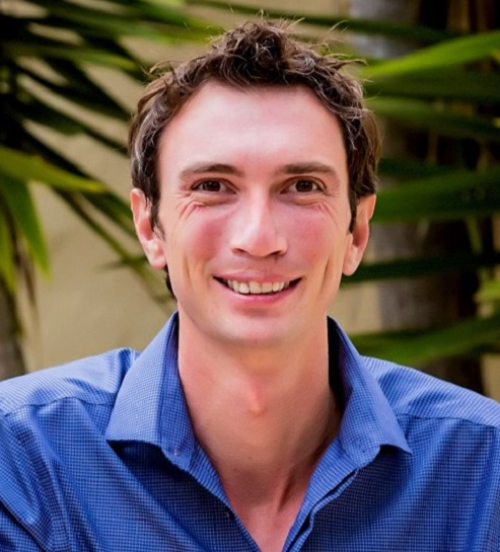Nano and Micro Technologies
(K-438) Using high conductance dielectrophoresis to collect organelle fragments from undiluted plasma undergoing cell lysis events in the presence of necrosis

Sarah Mitchell, B.S. (she/her/hers)
Biomedical Engineering Graduate Research Student
Oregon Health & Science University
Vancouver, Washington, United States- SH
Sean Hamilton
Post-Doc
Cancer Early Detection Advanced Research (CEDAR), Knight Cancer Research Institute, Oregon Health and Science University, United States 
Stuart Ibsen, Ph.D.
Assistant Professor
Department of Biomedical Engineering, School of Medicine, Cancer Early Detection Advanced Research Center, Knight Cancer Institute, Oregon Health & Science University, Oregon, United States
Presenting Author(s)
Co-Author(s)
Primary Investigator(s)
Biologically-derived nanoparticles are constantly released into circulation in the human body due to various disease mechanisms. One such mechanism is necrotic cell death from infections, disease, or injuries that consequently initiates cell lysis events that release organelle fragments into circulation. Necrosis is also inherent in many cancers due to poor vascularization creating hypoxic regions in tumors. This creates cellular lysis events around the site of the tumor1. There is evidence that cellular organelles, such as mitochondria, fragment into smaller particles due to shear forces in circulation, which gives us reason to believe that other organelles, such as the endoplasmic reticulum and centrosomes, released during cellular lysis will also fragment into smaller particles in circulation 2. However, organelle fragments have a small size and low buoyant density that makes recovery by traditional methods difficult and time consuming. High conductance dielectrophoresis (DEP) has the ability to spatially manipulate biological nanoparticles and move them towards regions of high electric field intensity created by an electrode microarray (Fig. 1a-c). However, it is unknown what types of organelle fragments might be recovered from undiluted human plasma by DEP. The successful collection and characterization of these particles in a DEP chip system furthers knowledge in the field of what types of biological particles can be collected using high-conductance DEP and what sorts of materials are being released by solid tumors into circulation through the necrosis and cell lysis pathway.
Materials and Methods: 30 µL of late stage metastatic cancer plasma was introduced to a proprietary electrokinetic chip-based Verita® system from Biological Dynamics' (San Diego, USA) to isolate and collect organelle fragments using an alternating electric current set to 14 kHz for 10 minutes. A 6-minute wash was then applied to remove bulk plasma. A protein immunostaining protocol fluorescently labeled organelle fragment target proteins TOMM20, calnexin, and pericentrin for the mitochondria, endoplasmic reticulum, and centrosome fragments respectively. Mitochondria and endoplasmic reticulum fragments were collected from colorectal cancer (CRC) plasma and centrosomes fragments were collected from chronic lymphocytic leukemia (CLL) cancer plasma (Fig. 1e-g). Imaging was then conducted to visualize the isolated organelle fragments using immunostaining. Secondary antibody dilution tests were implemented to determine optimal concentrations that reduced fluorescent background signal. Testing of healthy and late stage pancreatic ductal adenocarcinoma (PDAC) patient plasma was conducted and analytically compared for a cancer related protein (Biomarker A) that localizes to the mitochondria.
Results, Conclusions, and Discussions: Results and discussion: Using DEP and protein immunofluorescence staining, we successfully collected and detected organelle fragments of mitochondria, endoplasmic reticulum, and centrosomes from late stage metastatic cancer plasma (Fig. 1). As a secondary confirmation of specificity for our designated antibody target, we completed a dilution test using only the secondary antibody to determine optimal concentrations for the staining. Using a custom optical quantification software analysis3, we successfully differentiated between healthy and CRC plasma samples by comparing and seeing a statistically significant difference in collection level for Biomarker A carried on the mitochondria (Fig. 1h).
Conclusion: We successfully showed the collection and isolation of organelle fragments of the mitochondria, endoplasmic reticulum, and centrosomes from 30 µL of undiluted late stage cancer plasma using DEP. We also showed successful preliminary data stratifying healthy and cancer plasma samples by the expression level of mitochondria Biomarker A. This has significant implications for use of nanoparticles in cancer diagnostics by showing that passively released organelle fragments can be readily collected and can carry important cancer-related biomarker proteins.
References (Optional) : [1] Nejad, A. E. et al. Cancer Cell International (2021) 21:62. [2] Afrifa, J. et al. Mitochondrion (2019) 47:238-243. [3] Gustafson, K. T., et al. Lab on a Chip (2021) 1318-1332.
